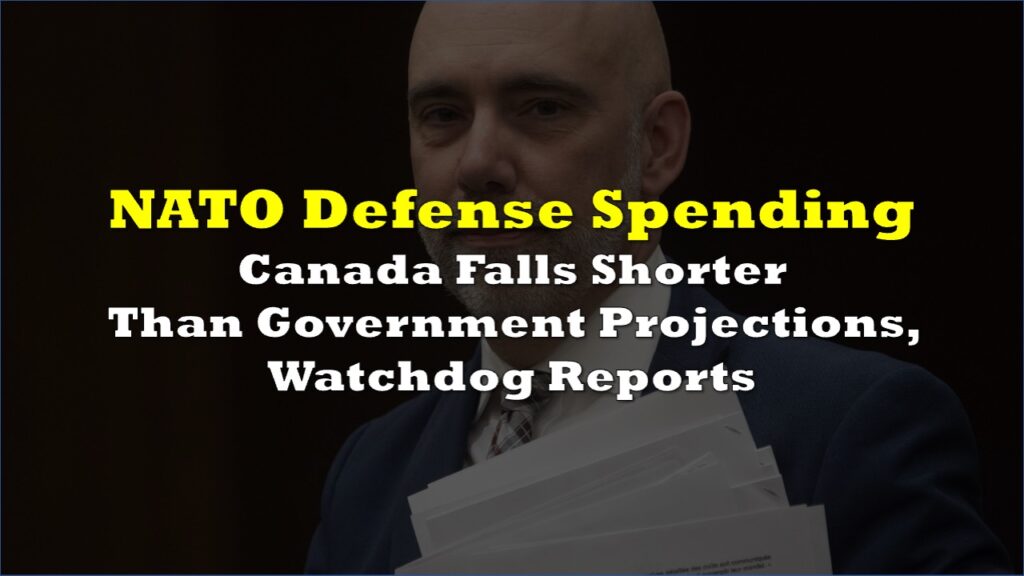It seems like eons ago but the ongoing war in Eastern Europe sparked by Russia’s decision to launch an invasion of Ukraine just started early this year. The geopolitical instability it caused had a tremendous economic impact both on the belligerents and its superpower trade partners.
The war has been punctuated with numerous sanctions (on Russia), trade hostages (on the West), and a growing list of global businesses pulling out of their Russian operations. While Moscow has been projecting strength through constant propaganda that the Western global economies are taking the toll of penalizing Kremlin and getting themselves involved in its “military operation,” a group of researchers from the Yale School of Management dived deep into the reality of the country’s economic situation.
Apparently, the war is hurting Russia more than it projects.
“As the Russian invasion of Ukraine enters into its fifth month, a common narrative has emerged that the unity of the world in standing up to Russia has somehow devolved into a ‘war of economic attrition which is taking its toll on the west’, given the supposed ‘resilience’ and even ‘prosperity’ of the Russian economy. This is simply untrue,” the paper began.
The paper–written by a team of researchers led by the President of the Yale Chief Executive Leadership Institute Jeffrey Sonnenfeld alongside fellows from the program Steven Tian, Franek Sokolowski, Michal Wyrebkowski, and Mateusz Kasprowicz–comprehensively analyzed data releases out of Moscow and its trade partners to present a fact-based description of the country’s economic situation post-invasion.
“From our analysis, it becomes clear: business retreats and sanctions are catastrophically crippling the Russian economy,” the Yale researchers concluded.
The cherrypicking, self-editing, prematurely projecting Kremlin
The paper did not mince words when it called out parties who contributed to the purportedly projected optimistic view of Russia’s economy–including Russia itself.
“While numbers released by the Kremlin have long been held by the economic community to be largely–if not always–credible, there are three significant, underappreciated considerations which severely strain the integrity of the Kremlin’s statistics since the outset of the invasion of this year,” the paper explained, adding a note for economists and analysts to “be extra careful about citing official Kremlin statistics.”
The researchers cited Russia’s tendency to withhold statistics that doesn’t agree with its projected economic superpower image. Kremlin is said to be hiding this information under the guise of “minimizing the risk of the imposition of additional sanctions.”
But the paper theorizes the reason behind this is much deeper. As Bloomberg reported back in May 2022, the country’s oil and gas revenues dropped by more than half from April 2022 based on Russia’s own data. For the researchers, the little information that managed to get out show either a possible reason why the country obfuscates its data or a taste of its worse-than-it-looks economic situation–or both.
This puts in perspective the recent act of Russia’s lower house to pass a bill that would reclassify information on its gold and foreign reserves as “state secrets“, presumably a response to the Group of 7 nations’ decision to ban gold imports from Moscow.

Russian President Vladimir Putin also doesn’t have a credible track record in maintaining transparent economic data out of the state’s statistics agency Rosstat, especially after he transferred the oversight to the economy ministry in 2017.
The third point explained how optimistic projections on Russian state revenue from energy exports are essentially unrealistic given that these were based on data “from the early days of the post-invasion period, when sanctions and the business retreat had not taken full effect.” This is exemplified by multiple projections that Russia’s oil and gas revenue will notch about US$285 billion this year compared to US$236 billion revenue from last year. The researchers argue that these projections haven’t taken into account the multiple businesses that pulled out of Russia, as well as the fact that they are incongruent to the huge decline in Moscow’s own reserves based on its own data.
Much ado about energy doomsday
Fears of exacerbating the European energy crisis arose recently as the Nord Stream 1 pipeline underwent its scheduled maintenance. While the dubbed ‘doomsday’ was averted after the flow resumed, Gazprom decided to restrict further the exports to 20% of the pipeline’s capacity–still putting the region’s energy resources in limbo.
But the team of researchers argue that Russia’s restrictions (both imposed on and self-implemented) on its commodity exports is actually hurting Moscow more than its trade partners. The paper submits that “there is widespread under-appreciation of the damage already wrought to Russia’s status as a leading commodity exporter.”
“First, the importance of commodity exports to Russia far exceeds the importance of Russian commodity exports to the rest of the world,” the paper read.
Specifically to natural gas: while Russia is European Union’s largest import source, it only accounts for less than half of the region’s total demand. In contrast, the region accounts for 83% of Russian gas exports.
“Europe’s challenges are legitimate; it cannot fully replace Russian energy in the short-term without painfully reducing energy consumption as a transitory measure… Yet there is some irony that…the Russian economy is hurt the most by shifting natural gas supply chains,” the paper added.

Another prevailing notion that the paper hopes to debunk is that Russia can just easily fill the hole left by its energy clients in the West via pivoting to its clients in the East, particularly China. The feasibility of this shift, while workable in the short and small-term, is arguably not commensurate to the lost revenue as Moscow projects.
“This Asian pipeline network contains a fraction of the capacity of the European pipeline network; and even long-planned Asian pipeline projects currently under construction are still years away from becoming operational, much less hastily initiated new projects,” the paper argued. Should Moscow decide to institutionalize its export connection to the East, it “will likely have to pay for pipelines connecting to Asia by itself.”

Even the pivot to the East is actually costly for Kremlin; while China is buying more oil from Russia, this is in effect purchased at a discount given that “Russian Urals oil [is] trading at the largest discount to the Brent benchmark on record, a whopping $35 price differential.”
Logistically, it also takes the longest for Moscow to redirect oil exports via sea tankers to East Asia than to other subcontinents–estimated at 35 days. This could be a potential reason why Russian oil tankers are apparently going dark, on top of possibly circumventing the sanctions.
Import cut, production cut, consumption cut
The sanctions are not only hitting Russia’s exports but also its imports–with reasons ranging from wary domestic firms who had its international clientele involuntarily cut off due to rising costs of raw materials and production. Imports reportedly account for 20% of Russian GDP and heavily power the domestic economy “despite Putin’s bellicose delusions of total self-sufficiency.”
“A review of trade data from Russia’s top trade partners–since, again, the Kremlin is no longer releasing its own import data–suggests that Russian imports fell by upwards of ~50% in the initial months following the invasion,” the paper wrote.

Same with the ‘pivot to the East’ narrative, Moscow has been touting that it can also depend on its domestic demand from Asian exports. However, China’s own official trade data betrays this narrative as the country’s exports to Russia plummeted by 50% from the start of the year to April.
In addition, while China is Russia’s largest import source in 2021, the latter isn’t even in Beijing’s top 10 export destinations in terms of value.

The import cuts spell trouble for Russia’s domestic production as well, especially hitting hard the local companies that depend on the international supply chain. This, the researchers theorize, contradictorily resulted to Putin’s ‘import substitution’ narrative.
“With the drop-off in Russian imports, many domestic producers have been unable to procure supplies and inputs. In desperation, Putin has effectively legalized grey market and intellectual property infringement–and at times has outright encouraged parallel imports,” the paper reasoned.
And as macroeconomy classes have taught, supply shortage leads to higher prices, and higher prices lead to less consumption.


Debunking the import substitution story, the paper cited the Russia’s automobile industry. Despite narratives claiming that the country has been replacing foreign imports with locally made substitutes, “import substitution has not been successful, and Russian innovation lags far behind that of peer countries.”
In particular, the volume of domestic motor vehicle production plummeted 52% year-on-year in March 2022, then 67% in April 2022, and 75% in May 2022.
“Even at these minimal production levels, significant shortcuts are being taken. Russia went so far as to suspend car production safety requirements in domestic automobile manufacturing, and many of the cars being manufactured post-invasion now lack such essentials as airbags and anti-lock brakes,” the paper noted.
The annual decline of domestic production and its respective contribution to the national revenue–despite Kremlin’s pronouncements of a thriving import substitution–transpire across the board.

Sustaining economic pressure is working
Perhaps the most glaring effect of the sanctions on Russian economy is the massive exodus of international companies out of the country. More than 1,000 global companies publicly announced their respective pullouts from the invading nation; the exits are estimated to have cost Moscow investments exceeding US$600 billion–around a 40% decline in the country’s GDP.
This also costed Russians to lose around 5 million jobs that are dependent on foreign investments.

Seemingly scrambling for stop gap measures, Putin “is resorting to patently unsustainable, dramatic fiscal and monetary intervention,” the researchers added. This led into a number of consequences: a probable budget deficit in 2022, low liquidity among the state and local businesses as the ruble further weakens, 50% decline in Russia’s stock market index, a sovereign debt default, and the government having to dip into its reserves to sustain its survivability.
“Looking ahead, there is no path out of economic oblivion for Russia as long as the allied countries remain unified in maintaining and increasing sanctions pressure against Russia,” the researchers concluded.
The paper further described Russia’s domestic financial markets as “the worst performing markets in the entire world this year.” This status further aggravates–on top of the state’s economy being frozen out of the international market–the country’s limited ability to tap into pools of capital it might need (and it probably will) to revitalize its nation back to sound financial standing.
“Defeatist headlines arguing that Russia’s economy has bounced back are simply not factual–the facts are that, by any metric and on any level, the Russian economy is reeling, and now is not the time to step on the brakes,” the paper ended.
Source: Sonnenfeld, Jeffrey and Tian, Steven and Sokolowski, Franek and Wyrebkowski, Michal and Kasprowicz, Mateusz, Business Retreats and Sanctions Are Crippling the Russian Economy (July 19, 2022). Available at SSRN: https://ssrn.com/abstract=4167193 or http://dx.doi.org/10.2139/ssrn.4167193
Information for this briefing was found via Yale School of Management and sources mentioned. The author has no securities or affiliations related to this organization. Not a recommendation to buy or sell. Always do additional research and consult a professional before purchasing a security. The author holds no licenses.









